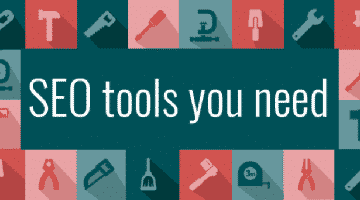When it comes to running a business, getting noticed online is everything. It is no longer enough to have a website in today’s digital age. To be successful, you need to have an online presence that is strong, consistent, and engaging. There are many different aspects to building your brand’s online presence, but there are six key components that you should focus on:
User experience is all about how your customers interact with your progressive web app online. Creating a positive user experience is essential to keeping customers happy and engaged with your brand. Good UX design includes:
- Mobile-friendliness: Over half of your web traffic will come from mobile devices, so your website must be designed to work well on all devices
- Layout and navigation: Your website should be easy to navigate and understand. Customers should be able to find what they are looking for quickly and easily
- Visual design: Your website should be visually appealing and consistent with your brand’s overall aesthetic
- Site features: Additional features like chatbots, forms, and interactive elements make client interaction more hands-off for you and more convenient and helpful for your users
- Fast loading times: No one wants to wait for a slow website to load. Make sure your site is optimized for speed
To improve your UX design, you need to clearly understand your target audience and what they want from your website. Then, run user testing and surveys to get feedback on your current design and make changes based on what you learn.
Search Engine Optimization (SEO)
SEO is the process of optimizing your website and content for Google search to drive organic traffic to a landing page or website. Since Google recognizes over 200 different ranking factors, SEO can be a complex and time-consuming task. However, it is essential for driving organic traffic to your website and should be a crucial part of your online marketing strategy. SEO can be broken into two main categories: on-page SEO and off-page SEO.
On-page SEO refers to optimizing your website’s elements (such as titles, metatags, and content keyword density) to improve your search engine rankings. It also involves factors like page load speed and mobile-friendliness. These factors are increasingly important thanks to Google’s mobile-first indexing.
Off-page SEO encompasses all the activities you do outside of your website to promote it, such as link building, forum membership, podcasting, content marketing, and social media marketing. Off-page SEO may also include activities like local SEO, which optimizes your online presence for Google Maps and other local directories.
A highly effective SEO campaign will include a mix of on-page and off-page optimization. However, it is essential to note that SEO takes time and effort to see results. Be patient and consistent in your efforts, and you will eventually see your website rise in search engine rankings.
Link building is the process of earning links from other websites. Links are an important ranking factor for SEO because they signal to Google that your website is relevant and trustworthy. Not only does building links improve your site’s relationship with search engines, but it is a fantastic way to build connections within your industry.
There are two distinct types of connections: dofollow links and nofollow links. Link juice (or SEO value) is passed along via dofollow links, but not nofollow links. Nofollow links can still be valuable as they can help increase brand awareness and drive traffic to your website. There are many different ways to build links, such as:
- Guest blogging
- Creating infographics
- Building directories
- Submitting press releases
- Conducting interviews
The critical thing to remember is that businesses should gradually build links. Google penalizes websites that engage in unnatural or spammy link building practices.
Content marketing is creating and distributing valuable, relevant, and consistent content that accurately represents your business and attracts a relevant audience. Content marketing is your opportunity to show your audience that you are an expert in your industry.
Your content should be designed to meet your target audience’s needs and answer their questions. It should also be keyword-optimized to help improve your website’s search engine rankings. If you’re not sure what kind of content to create, here are some ideas:
- Blog posts
- Videos
- Podcasts
- Ebooks and whitepapers
- Infographics
- How-to guides
- Product reviews
- Testimonials and case studies
- News articles
Whatever content you produce, make sure it is high-quality, informative, and shareable. Publishing low-quality content will hurt your SEO rankings, and turn off your audience.
Performance marketing is an umbrella term that refers to all online marketing activities that can be measured and attributed to a specific goal, such as website visitors, leads, or sales. Businesses typically use performance-based marketing to acquire new customers or grow their revenue in a fast and scalable manner. Some common performance marketing channels include:
- Paid search (Google AdWords)
- Display advertising (Banner ads)
- Affiliate marketing
- Email marketing
- Social media advertising (Facebook Ads, Twitter Ads)
Performance marketing is a vital part of any online marketing strategy because it allows you to track your return on investment (ROI) and adjust your campaigns accordingly. If you want to maximize your performance marketing ROI, hiring a company like Goodway can be an excellent way to grow your business while focusing on your core competencies.
A/B testing, (split testing), compares two iterations of a web page or marketing campaign to see which one performs better. A/B testing allows you to test different hypotheses and make data-driven decisions about your marketing.
Not gathering enough user feedback is one of the top startup marketing mistakes, so A/B testing is not something that you should overlook. Some everyday things that your business may run A/B tests for include:
- Headlines
- Calls to action
- Images
- Layout
- Color scheme
The best way to A/B test is to create two versions of your web page or marketing campaign (A and B) and then send half of your traffic to each version. You can then measure the conversion rate for each version and see which one performs better. Once you know which version performs better, you can make that the permanent version.
Building your brand’s online presence is essential to reaching your target audience and growing your business. These six key components—UX design, SEO, link building, content marketing, performance marketing, and A/B testing—are all critical pieces of the puzzle.
Featured Image: https://pixabay.com/photos/digital-marketing-seo-google-1725340/




